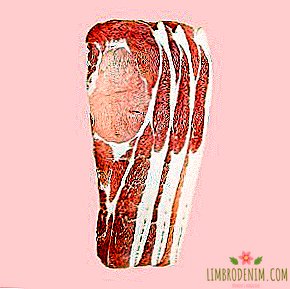DNA will tell: How and why establish paternity
The theme of the definition of paternity love to exploit in TV shows and television shows, and recently the whole world has flown around the story with the exhumation of the body of Salvador Dali at the insistence of a woman who called herself his daughter. True, the paternity of the great artist was not confirmed. We understand how paternity tests work and what results they can show, together with experts: Marina Demidova, Executive Director of Medical Genomix, and Olga Kokorina, a genetic doctor at Invitro Laboratory.

Who and why conducts paternity tests
According to Marina Demidova, about three thousand tests are done per month in Russia, which is several times less per capita than in Europe and America. Our market is not saturated, and many potential consumers simply do not know that a paternity test is easy, inexpensive and very accurate. Now the market is growing and for a long time will be in the growth stage. A small part of the samples is sent for analysis to foreign laboratories (mainly in the USA), but 90% is done in public and private laboratories located in Russia. Olga Kokorina notes that the number of studies to establish paternity is increasing every year, because such tests began to speak publicly and patient awareness about these services began to grow. In Invitro, the test for paternity and maternity is taken every month from 50 to 100 people throughout Russia.
Completely different people apply for paternity tests, each has its own story - most often painful. Doctors do not just have to advise a person, but often deeply delve into the family situation. Many people want to make sure that they pay child support to their child, and not to someone else's, some establish a relationship to enter the child in the documents and formalize paternity. Often, men turn up in whom adult children are suddenly found. There have been cases when people came to the laboratory on the way from the maternity hospital. And sometimes the woman herself tries to understand from whom she has a child, since during the period of conception there were several sexual partners. Frequent customers are grandmothers who do not trust the wives of their sons. They either make a test to determine the relationship between themselves and their grandson, or they provide a biomaterial from the alleged father, often often in secret from himself. This is also possible - Demidova says that fatherhood had to be installed on toothbrushes, cigarette butts, pacifiers, chewing gums, cutlery, and even dried sperm, although smear on the inside of the cheek is considered a standard biomaterial.
How is the analysis carried out
Each human cell contains forty-six chromosomes. The exception is the germ cells, that is, the eggs and spermatozoa; in them, the chromosomes are exactly two times smaller, twenty-three pieces each. When they unite and an embryo forms, in its cells everything is grown-up: forty-six chromosomes, half from mom and dad. Therefore, the child’s DNA is half the same as the mother’s and half the father’s. This law is the basis of the paternity test.
How exactly the inherited genes will manifest itself is impossible to predict. Appearance is a phenotype, that is, a set of traits that determine how a person looks. Genes, of course, affect it, but harder than you can imagine after a school biology course. In the tasks about peas and fruit flies everything was simple: exactly the same mush were born from the front sight with striped wings, and the yellow peas did not produce green offspring. Man is much more complex, we have more genes (including those whose functions are still unknown), so the result of the influence of the genome on the exterior is unpredictable. A child can be a copy of the mother, a portrait of the father, or maybe something like a great-great-grandfather, from whom there is not even a single photo left.
But an analysis of gene sequences will still show who the child got its chromosomes from. To test, you first need to get samples of cells containing DNA - it is contained in all cells of the body, and it is not so difficult, but it is easier to work with some types of material. Therefore, now saliva or scraping from the inside of the cheek is most often used for analysis - it is simple, painless and does not require any special expenses. Since everyone can collect saliva on a cotton swab, this method of obtaining DNA is used in "home" sets for genetic testing: you collect a sample of saliva and send it by mail.
In Russia, too, there is a tendency towards home collection of biomaterial - and, according to Marina Demidova, this repeats what is happening in Europe. For example, in England now, only tests with personal identification for the court are being done in the laboratory, and all informational examinations are carried out by taking the biomaterial independently and sending it to the laboratory by mail or courier. To pass a paternity test, it is enough to get a set in the mail, pay for the analysis online and send the biomaterial to the laboratory. The process is so simple that more and more people use the method. Although many still prefer to personally come to the clinic, even for the usual information test without personal identification.
Of course, both blood and other tissues can also be used for testing - as, for example, in forensic science, where DNA is determined according to what is needed. After samples are obtained in the laboratory, researchers perform PCR (polymerase chain reaction), that is, make multiple copies of DNA. Then they will be easier to compare with the database - or, if we are talking about establishing relationships, with the DNA of another person. The more coincidences are revealed, the higher the degree of kinship between people. Due to such testing, it is possible to confirm not only paternity or motherhood, but also more distant kinship ties - however, in such cases it can only be determined that people are distant relatives, but it is not possible to establish exactly who is who. Takes the test about two weeks, and costs about fifteen thousand rubles.

How accurate is DNA analysis
Although rarely it is necessary to speak about one hundred percent accuracy in medicine and biology, the result of DNA analysis approaches it. If the patterns coincided, then it is pointless to recheck them - except to suggest a complicated story in the spirit of soap operas about separated identical twins claiming to be a father. Theoretically, the human factor remains possible - for example, someone confused the samples and the result was negative, but this is again a theory that is closer to the plots of melodramas than to life.
Laboratories that are engaged in testing, care about their reputation: after all, the issue of establishing kinship is delicate, and its results can change people's lives. It is unlikely that it is profitable for laboratories to lose money invested in equipment due to rumors of unreliable results. For the same reason, bikes about how someone bribed a laboratory and faked a test are unlikely. Anyway, any doubts are resolved by repeated analysis in the same or another laboratory. Double positive or double negative result eliminates the possibility of error.
Can you check paternity without a father
Checking the relationship is most convenient, of course, "in a straight line", between children and parents - in this case, everything is simple. It is enough to compare the two regions of the genome, and the number of matches will speak for itself. But you can define another degree of kinship - for example, between a grandmother or grandfather and grandchildren. In this case, the number of matched loci will be less than when comparing samples of children and parents, but much more than when comparing the genome of two people who are not related. Of course, the paternity of a particular person is not so directly confirmed - it will still be necessary to prove that there are no other variants of kinship between the tested people.
Is it possible to determine paternity during pregnancy
In some cases, the question of genetic testing arises during pregnancy - and for this there are several ways. Widely known - with the help of amniotic fluid. It always contains the cells of the embryo, from which the DNA necessary for analysis is isolated. The obvious disadvantage of this method is its invasiveness: in order to take the amniotic fluid, it is necessary to carry out an amniocentesis procedure, that is, to penetrate the fetal membranes. This increases the risk of abortion. Another similar method is chorionic villus biopsy, in which placental tissue is taken for analysis. This is also an invasive procedure that can lead to miscarriage.
But there are methods that do not require such complex operations. In 1997, it turned out that the blood of a pregnant woman contains the fetal DNA, and now the laboratories offer options for a non-invasive prenatal test. They are made from the ninth week of pregnancy, they are safe for the fetus - however, they are much more expensive than any other test to identify family ties. In addition, this technology is not available in every laboratory, because it is relatively new. By the way, this way of isolating the DNA of the embryo has another application: early analysis of genes reveals abnormalities in the development of the fetus, chromosomal abnormalities, such as Down syndrome, and it does this more accurately than ultrasound and other methods.
What do the results of the study
When it comes to paternity or motherhood, the results are accurate: the relationship is either confirmed or refuted. The results can only be such, that is, the laboratories do not make assumptions and do not try to guess how people who brought the material for analysis can still be connected. There is no third option in matters of paternity or motherhood, but it appears when it comes to establishing a relationship between, say, sisters and brothers, cousins, and so on. If the DNA matches the required number of parameters, the result sounds something like "kinship is possible", if not - "kinship is unlikely." But if there are not many coincidences and not a few, then the result may be uncertain.
Analyzes can be taken anonymously, that is, the results will show the abstract faces A and B and the degree of confirmed relationship between them. Only anonymous analyzes mean nothing to the court - and often the court generally accepts the results of only those analyzes that were appointed by its decision. If paternity is established in a judicial order, then, most likely, you will have to go through a formal examination. The process itself will not differ from the usual analysis, except for the features of paperwork - and, of course, anonymity in this case is out of the question.
Photo:Henrik Dolle - stock.adobe.com, mars58 - stock.adobe.com





